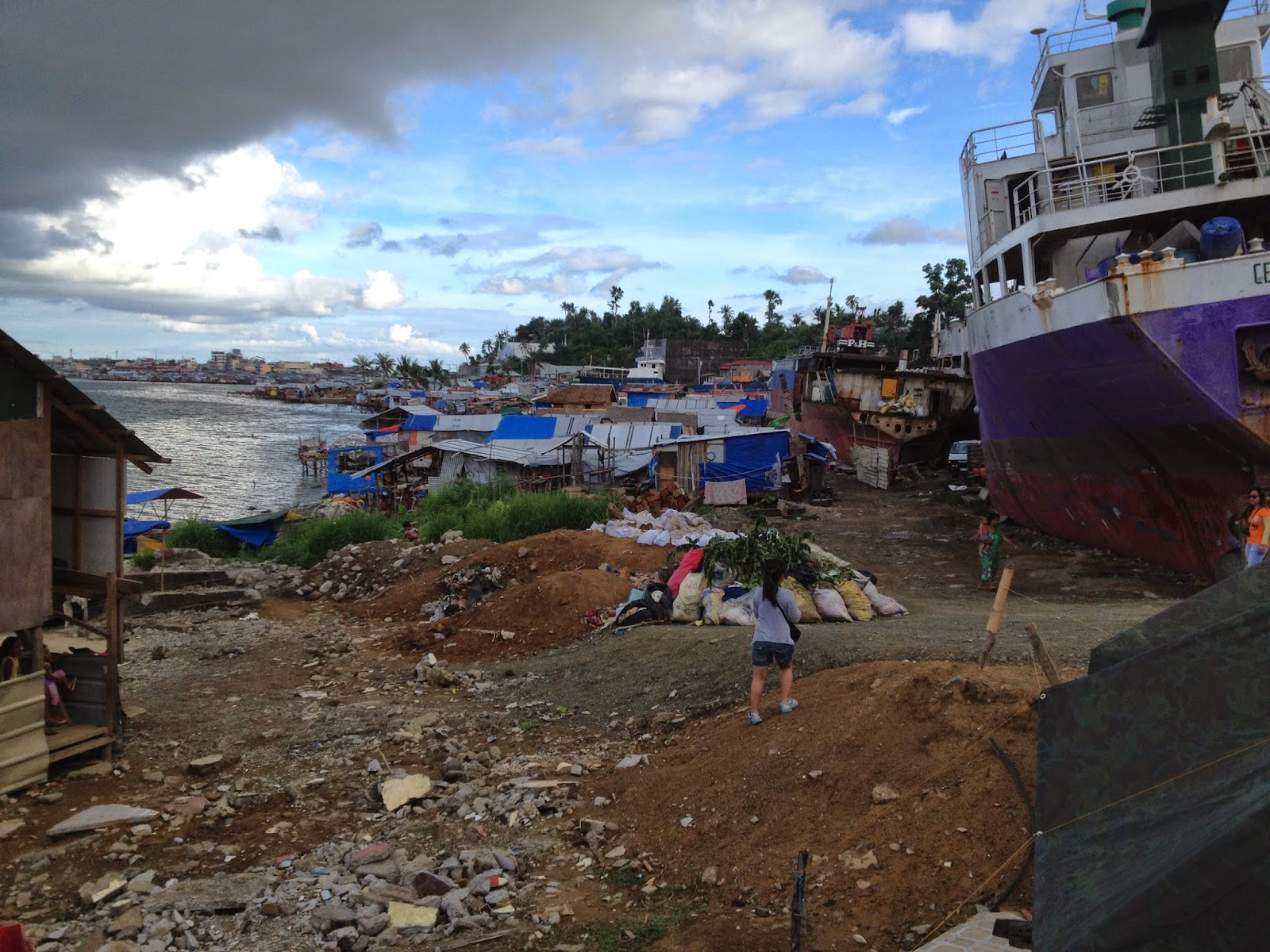July 2, 2014
The Philippine government dictated after the typhoon that no one is allowed to live within 40 meters of shore, but there are densely populated, and economically depressed, neighborhoods occupying the shoreline. We visited some of these devastated communities around the city of Tacloban. When the typhoon hit, it sent water up to two stories high, flooding and washing away homes and people with incredible force. The winds were nearly 200 miles per hour, and people said the rain and water on their skin felt like hammers.
We visited a community called Anibong which lost around a quarter of it’s population to Yolanda. The woman Nina spoke with was brought to tears talking about it. This coastal settlement has five ships washed up into it, almost onto the road. I have never seen anything like it. The massive beached ships with people living in and around them was a shocking visual of how powerful Yolanda was.
In a nation of islands, the sea is essential. Fishermen know that the ocean can provide for us our whole lives, but in an instant, or a long and tormenting night, everything can be lost. People say that during Yolanda it was “a hell of water.” Fishermen were hit particularly hard. Losing their boats and gear meant losing their livelihood. The donation of salmon is a gift from the fishing towns and people of Alaska to the coastal communities in need here on Leyte Island in the Philippines.
We checked out an Oxfam aid program that is building new boats for fishermen and getting them new gear, in the hopes of getting them back out to sea. At the site of the program, bright blue wooden canoes with yellow trim scattered the beach. The fishermen were waiting for fiberglass boats to be built for them, and to be provided with critical outriggers. One fisherman we chatted with stood by his boat, tattooed, shirtless and gesticulating with his cigarette, easy smile on his weathered face. He reminded me of fishermen I’ve known in Alaska, and of the commonality we share in our dependence on the sea. Though she becomes hell, and may steal everything we have, what other option is there but to keep fishing?
 |
| A local fisherman telling us about the boat-rebuilding project. |
 |
| A man and his boat. |
 |
| Folks lined up in Anibong for a salmon distribution. The Benedictine sisters help with distributions. |
 |
| Anibong: a settlement among the beached boats and rubble. |
 |
| Dance party. |

















































